Spain
Albarracin – Aragon
It was late autumn when we drove through the Aragon region that stretches from the high Pyrenees Mountains where Romanesque architecture is prevalent, to Teruel province, where Islamic and Christian architecture intermingles to create the unique Mudejar style architecture.
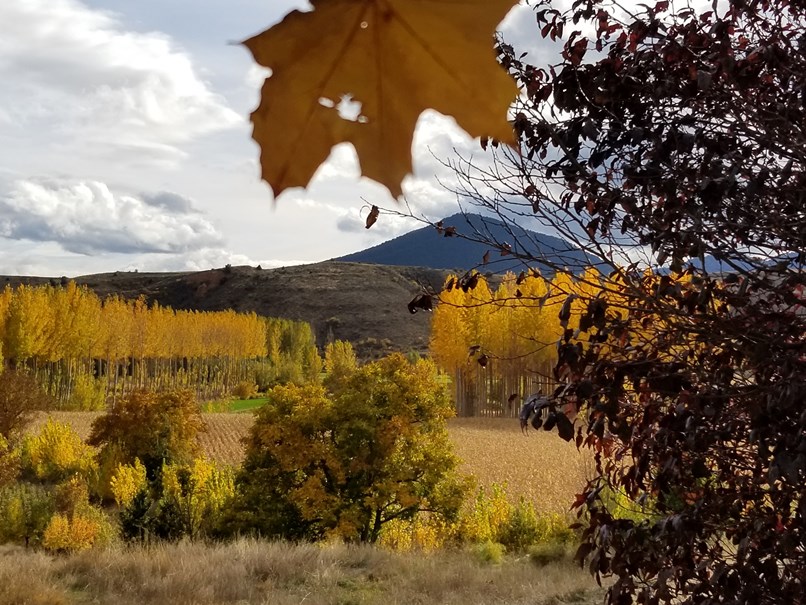
Autumn in the Aragon region
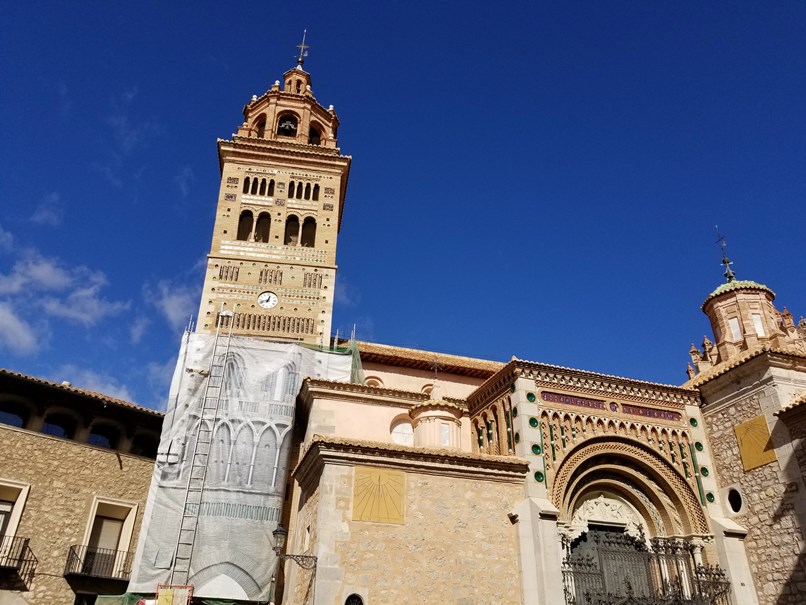
The Mudejar Style Archtecture in Teruel
The area is sprinkled with medieval towns. Albarracín, which like a chameleon, changes color from a dusty rose to shades of ochre depending on the weather and time of day – is the fairest of them all.
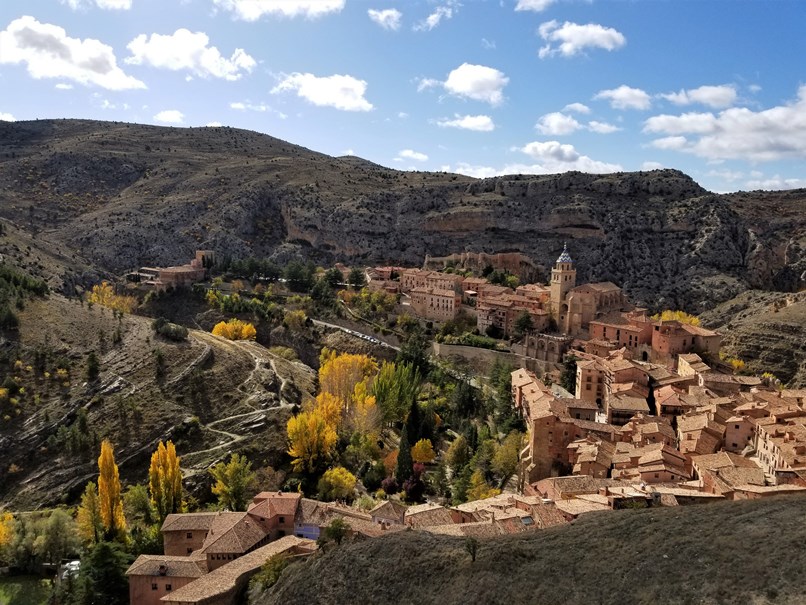
The village is wedged into the rugged rocky-mountains where remnants of the 11th – 12th century fortified walls seesaw up, across, and down, the rocky slopes, creating the perfect backdrop for the village.
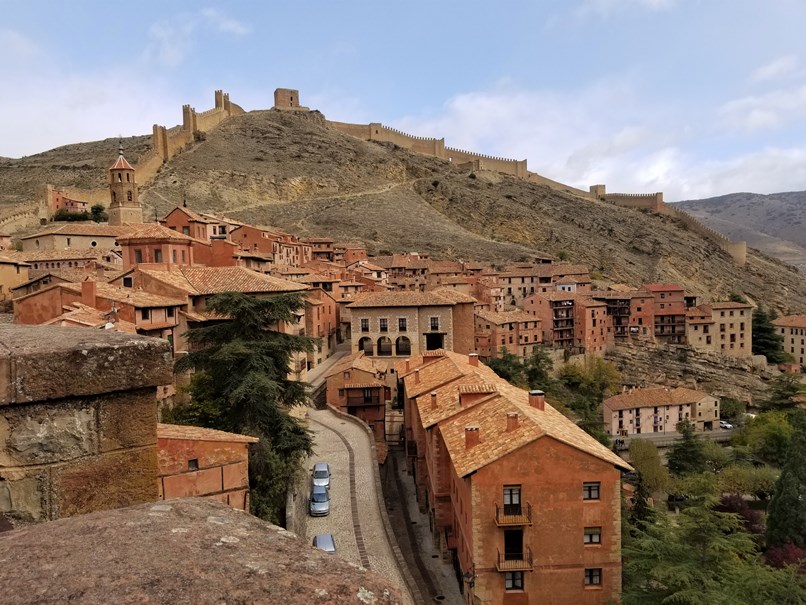
Wandering the steep, narrow lanes of Albarracín is like stepping into a village movie set. Houses barely an arm’s-width apart lean into each other; iron-studded wooden front doors are set between aged stone and weathered plaster; sculpted wrought-iron balconies cling to the walls.
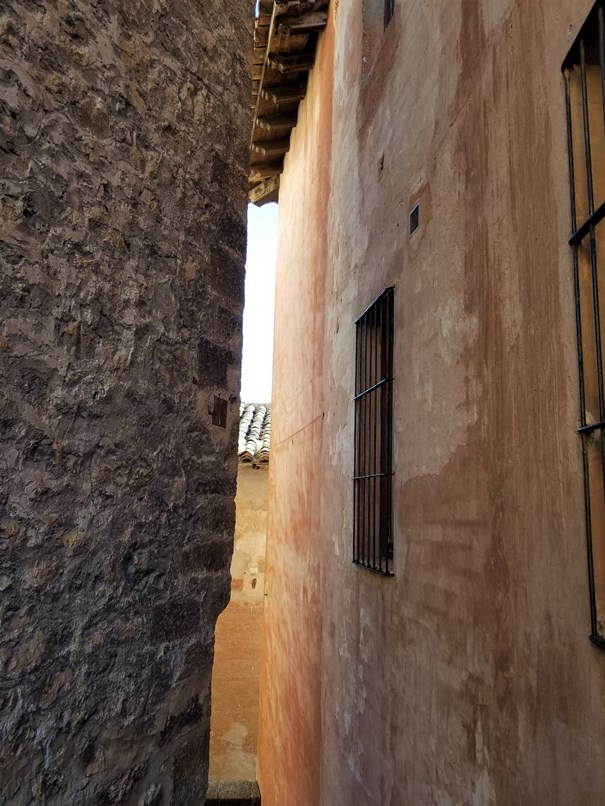
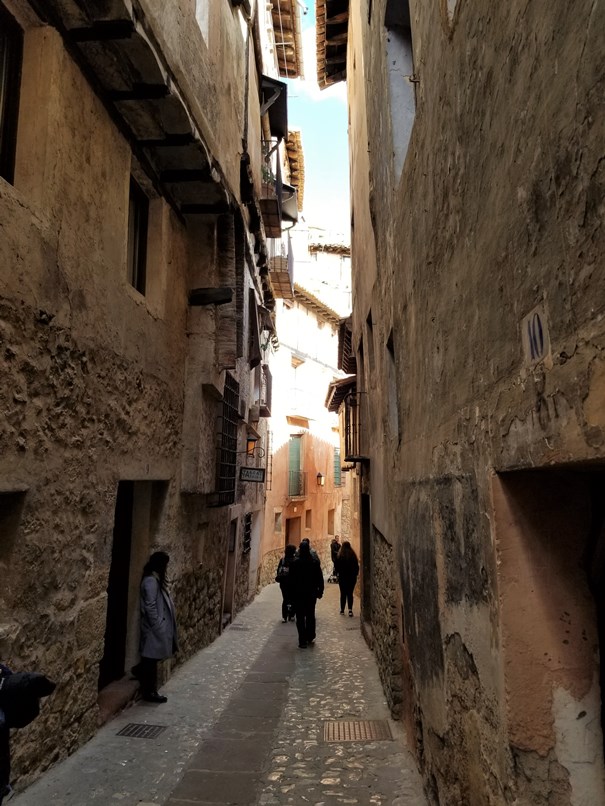
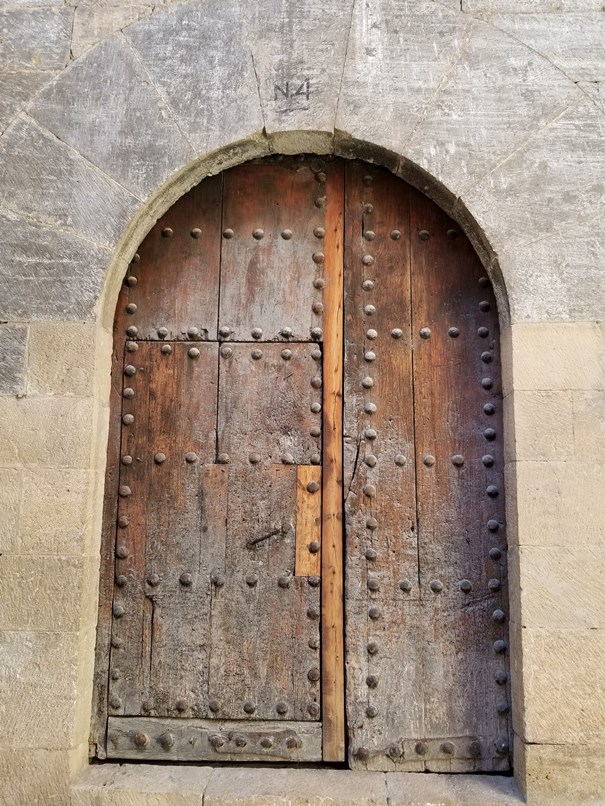
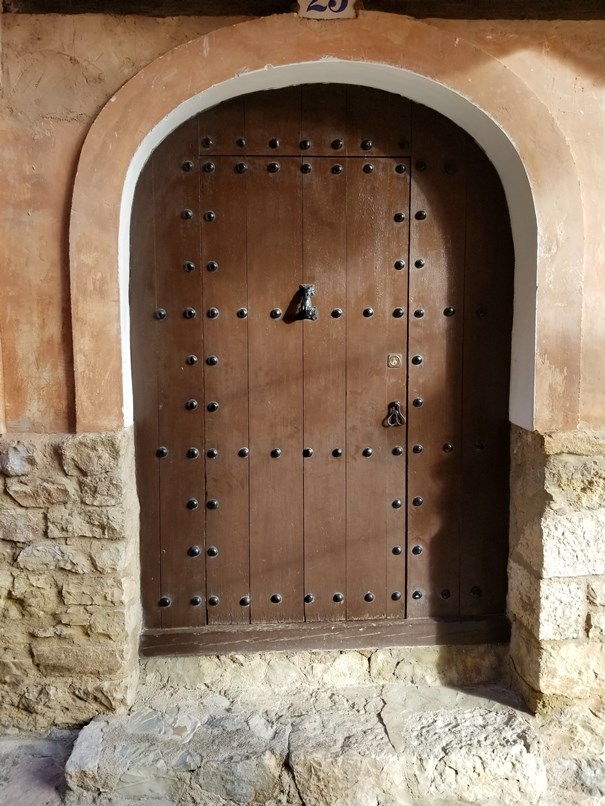
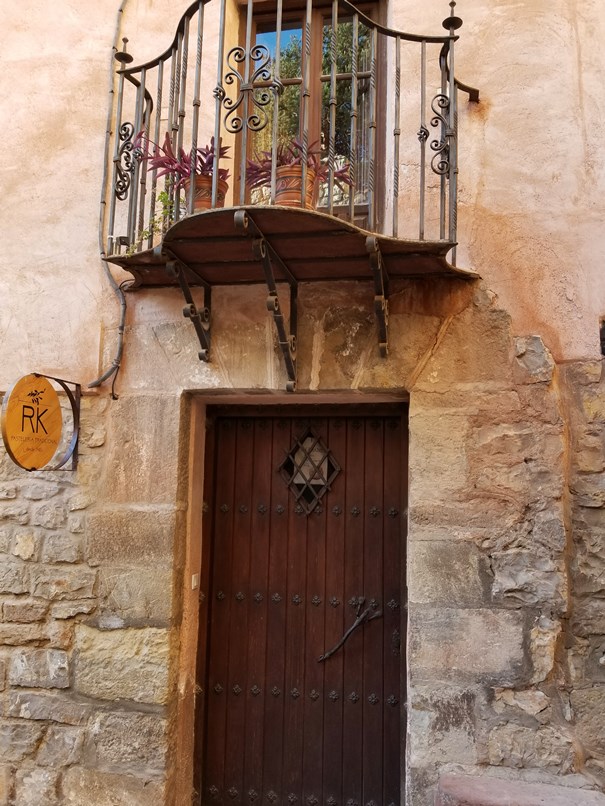
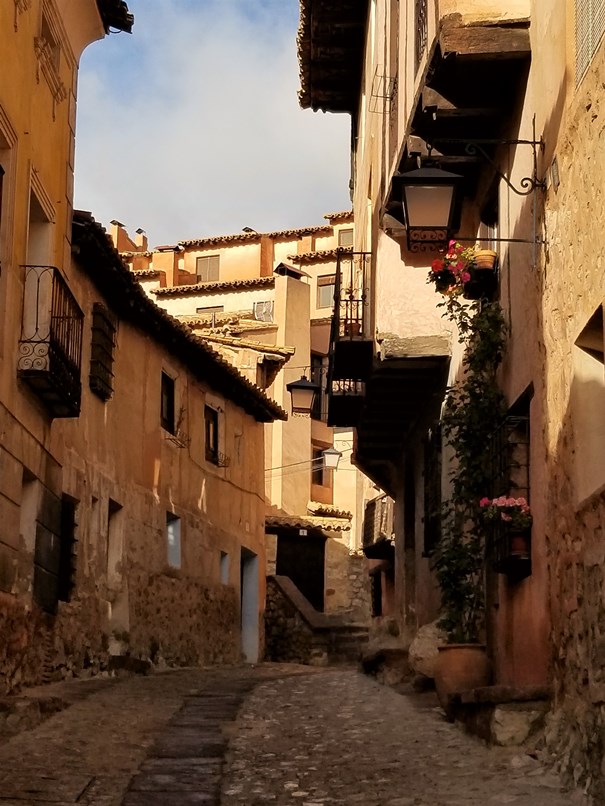
Plaza Mayor – the small town square – is ringed by cafes and restaurants, all of which were overflowing with both locals and visitors on a sunny but cold and breezy October day. We managed to find a minuscule table in a bar/coffee shop housed in the hollowed-out rock, where the cozy, cave-like ambiance and the steaming cups of cappuccino were just what we needed after a morning of exploring and hiking.
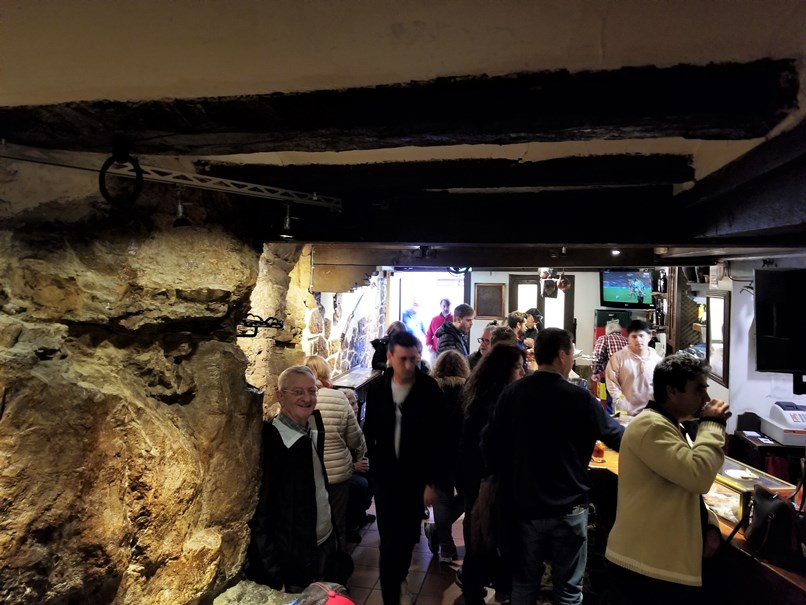
From the 11th to the 12thcentury, Albarracín was occupied by the Muslin – Berber Banu Razin clan, which explains how Albarracín came to have a Moorish fortress, which stands on a clifftop at the center of the original old Muslim quarter. Enclosed within the fortress, the remains of 12thcentury palace-houses, a Muslin hammam (traditional sauna), and a sandstone courtyard with archways have been preserved.
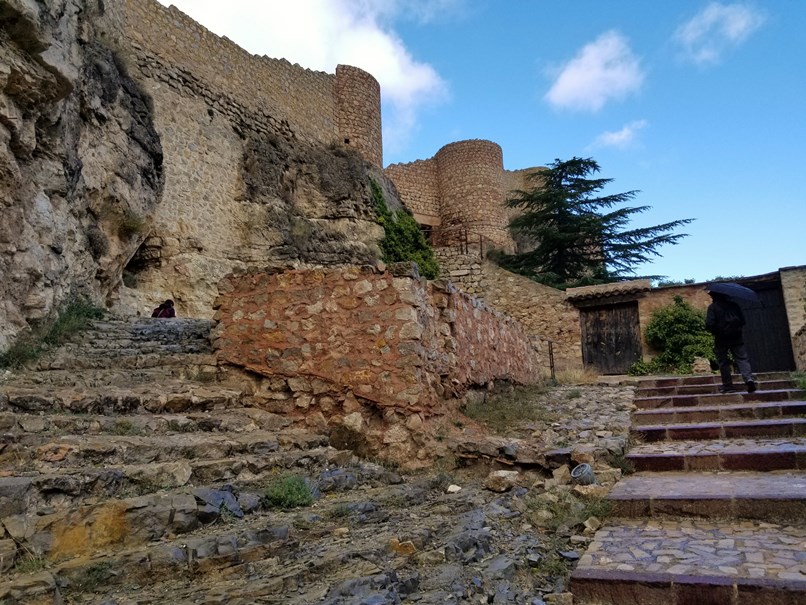
Catedral del Salvador, capped by an aquamarine and turquoise tiled bell tower, is an Albarracín landmark. Built during the 16thcentury, it was designed in the Aragon Romanesque-Mudejar style on the ruins of a 14thcentury Romanesque temple. Traces of original frescoes adorn the walls. The 18thcentury brought the opulent baroque period and the creation of the gilded altarpiece, the baroque chapel, and the installation of reserved front row seating for the wealthiest families in the form of hand-carved, ornate wooden benches which bear the families’ coats of arms.
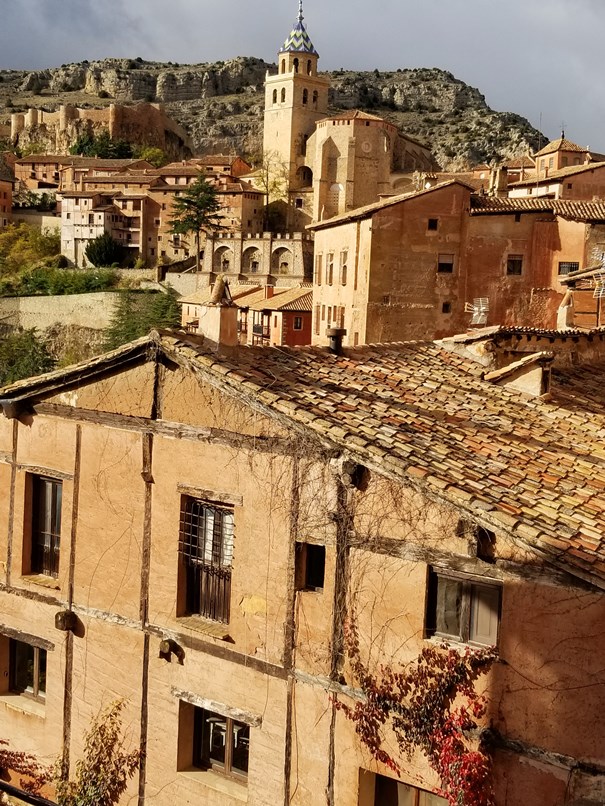
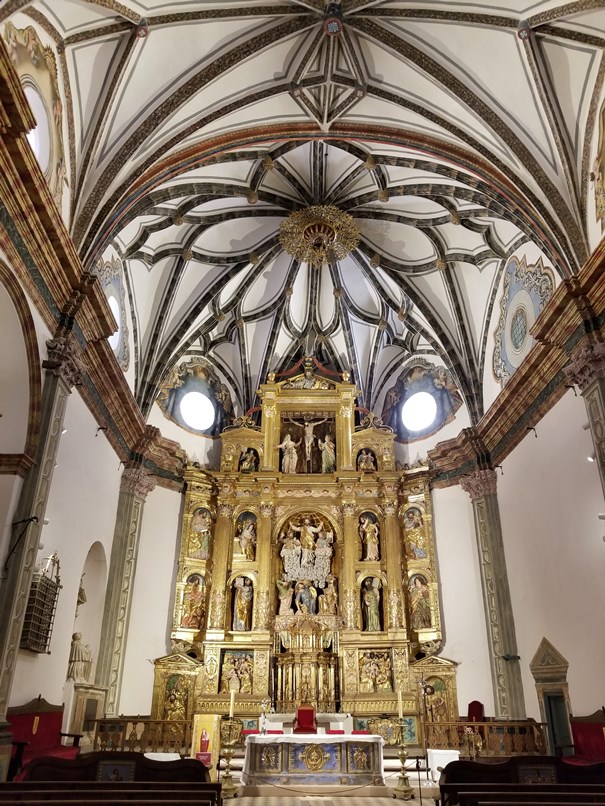
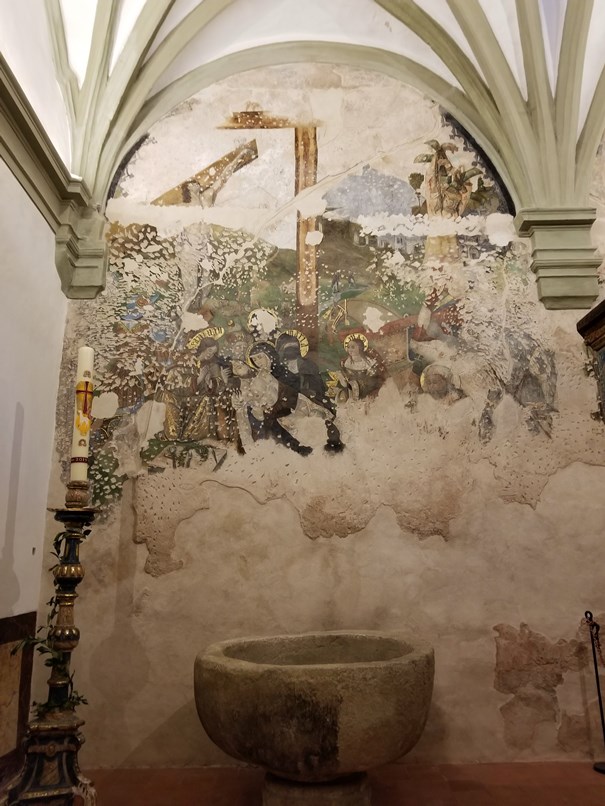
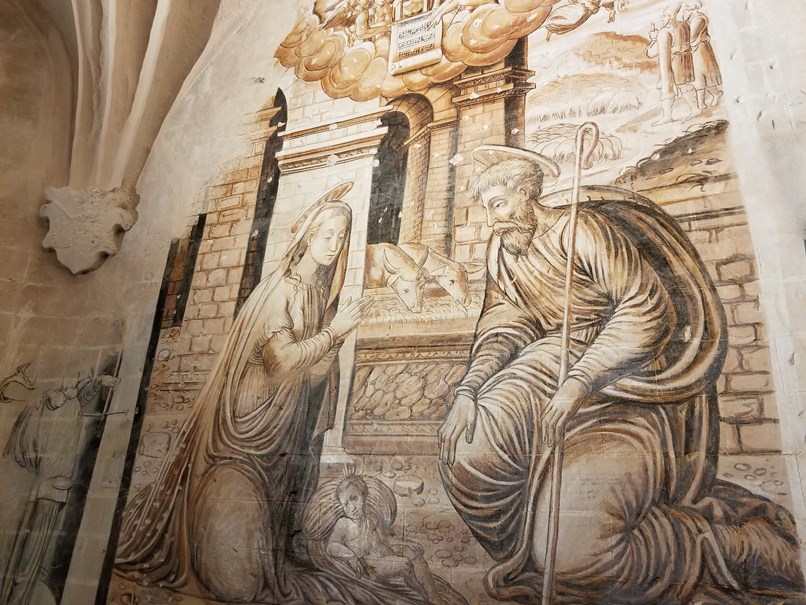
A walk up to the fortified walls is well worth the effort for the spectacular panoramic view. Wear sturdy shoes for the climb as the path is rocky and uneven.
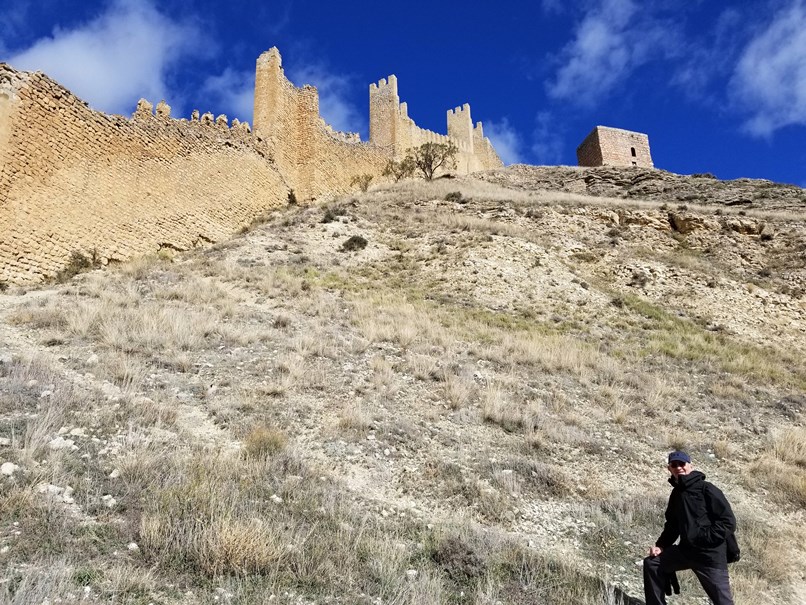
The Guadalaviar River circles the town, and one is never too far from the soothing sound of water skipping over stones, and tumbling over rocky ledges.
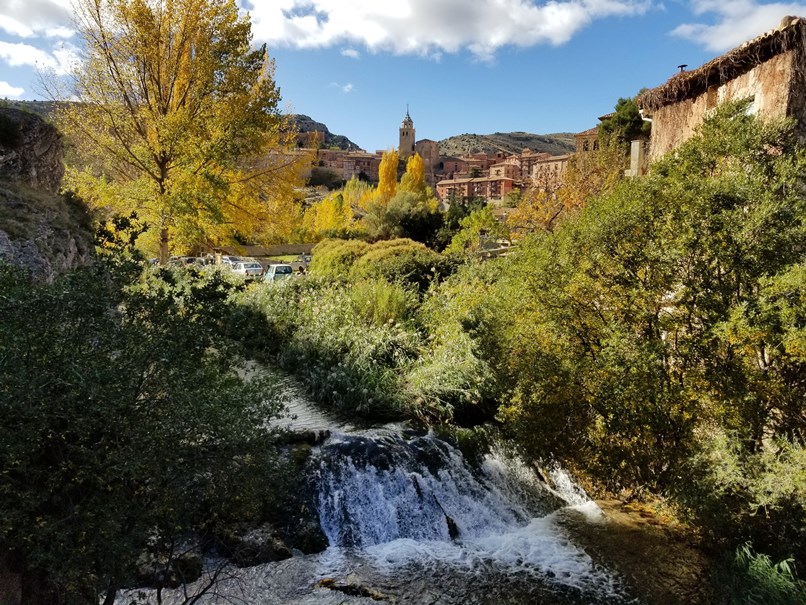
Albarracín is known for its gorgeous hikes in the surrounding mountains and the caves, where Stone Age cave-art of wildlife and hunting scenes have survived through the ages.
If one does no other hike, don’t miss the Paseo Fluvial (the Riverwalk), which starts in the parking lot directly across from Restaurant Señorío de Albarracín. You do have to climb over rocks in some places, but it’s not difficult, and the hike is exhilarating. The path follows the river up steep steps, around rocky bends, along elevated wooden walkways, down hundreds of wooden steps, across suspension bridges, past waterwheels, along the forest floor, past charming rustic old homes covered in vines, and ultimately a view of the pink town glowing in the late afternoon light. One reenters the village via Portal del Agua.
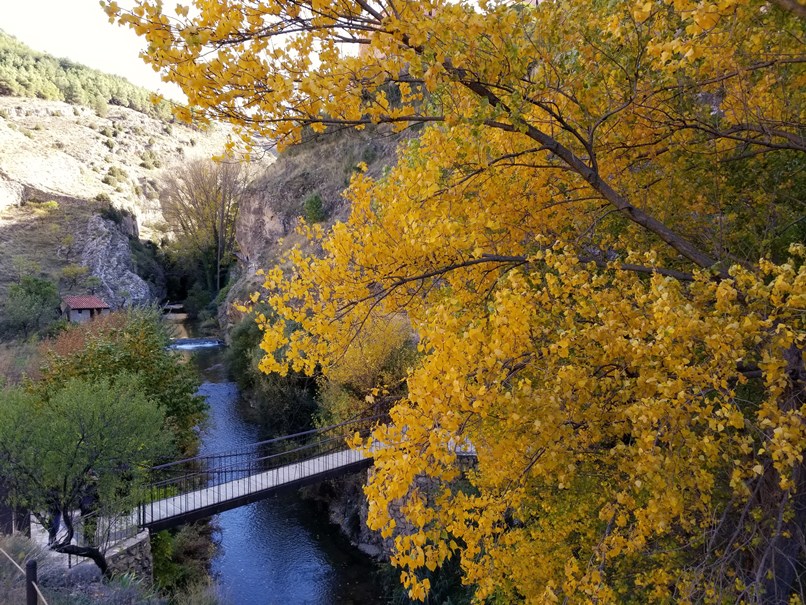
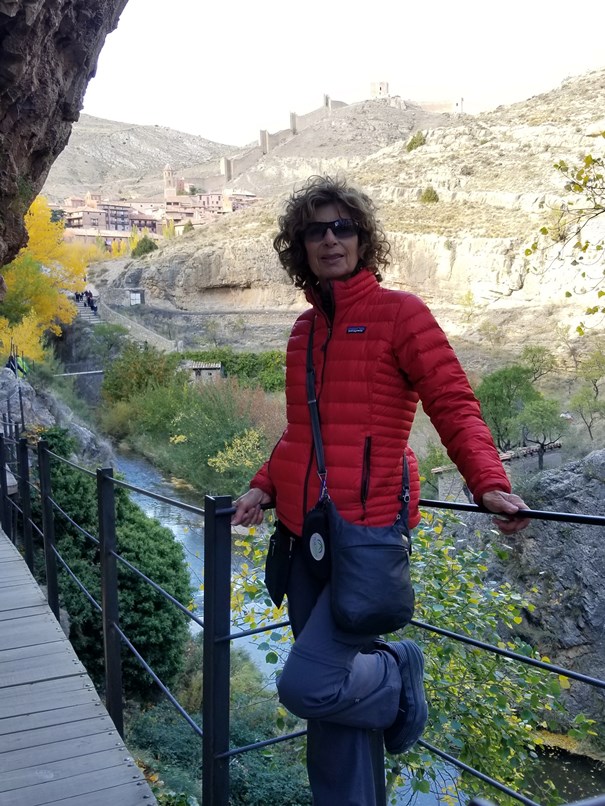
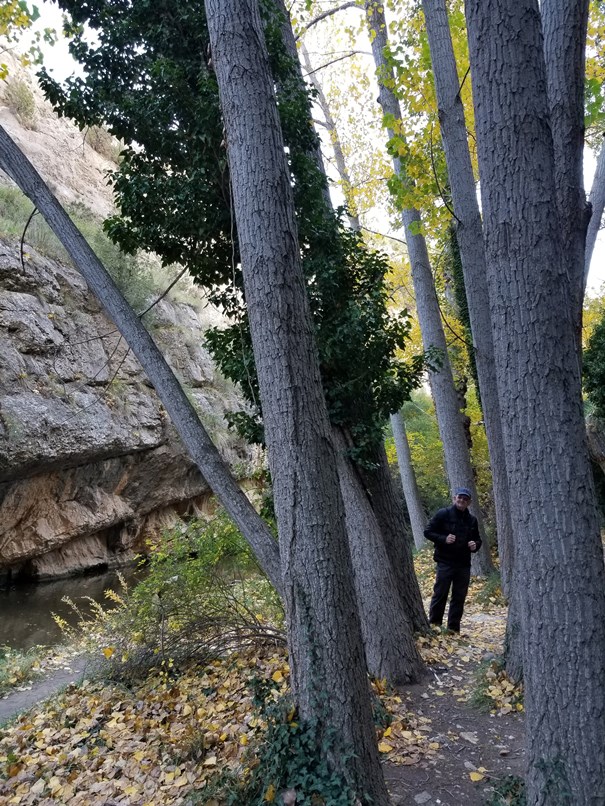
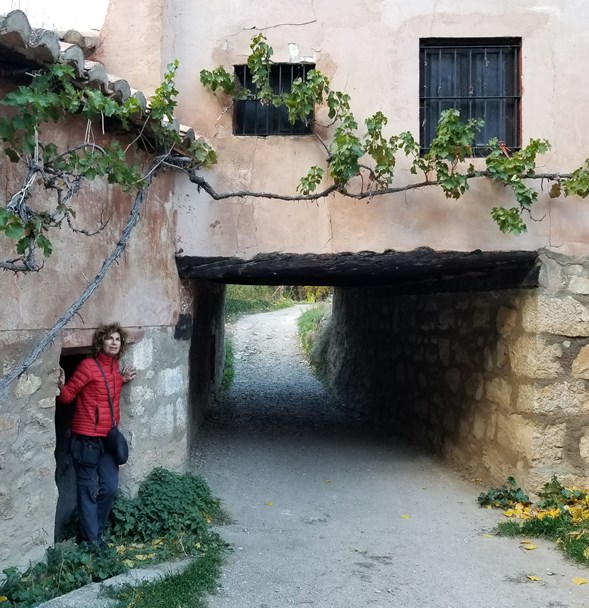
I highly recommend spending a few nights in Albarracín to soak up its tranquility, natural beauty, and fully appreciate one’s surroundings.
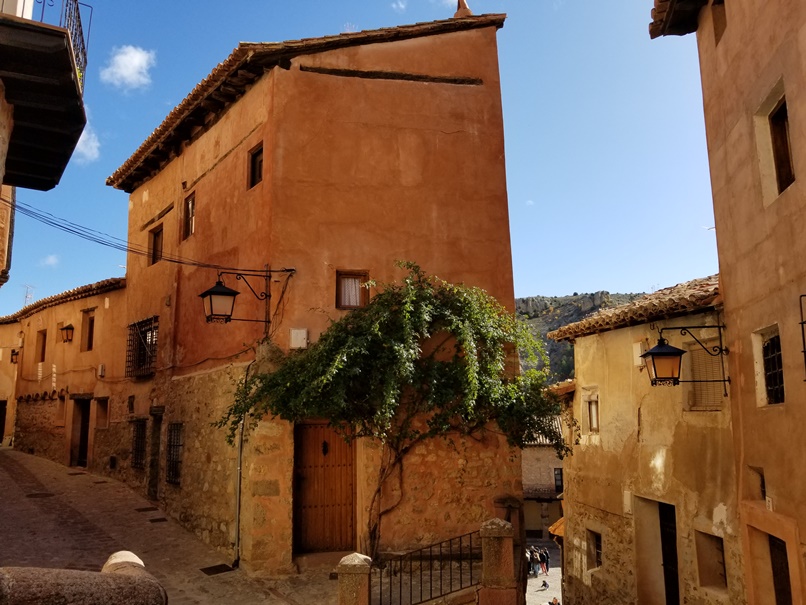
We stayed in Caserón de la Fuente, a five-minute walk from town. I always search for small hotels that have unique qualities, and Caserón de la Fuente, with its spacious, spotlessly clean double suites, could not have been a finer choice. The hotel is a reimagined 19thcentury riverside mill. The ground floor and basement were a flour mill, and the two upper floors were a wool and spinning mill. According to the Albarracín archives, it is more than 200 years old.
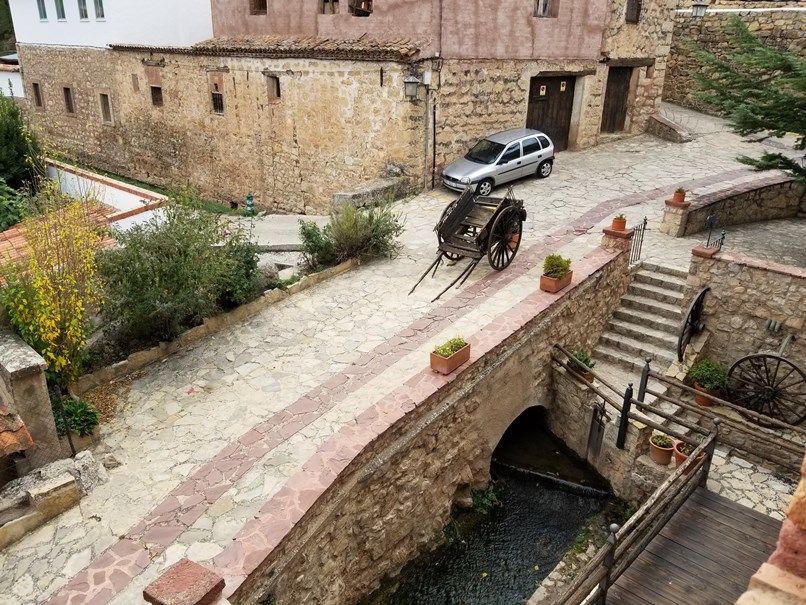
It sits on the banks of the river among rich vegetation which, in the last weeks of autumn, was painted in shades of gold, red, and orange; horses roamed free – their manes flying in the wind, and the sound of the Guadelavier River below our bedroom and outside the dining room window was as soothing as a lullaby.
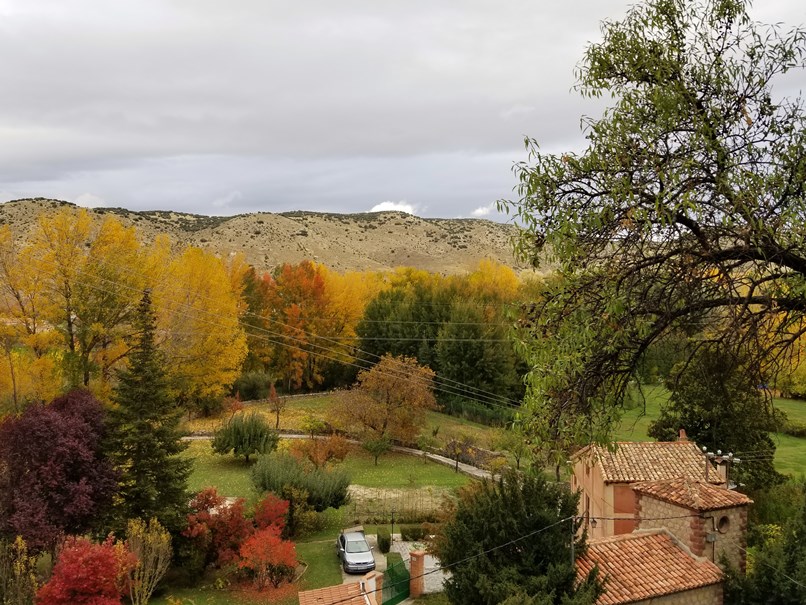
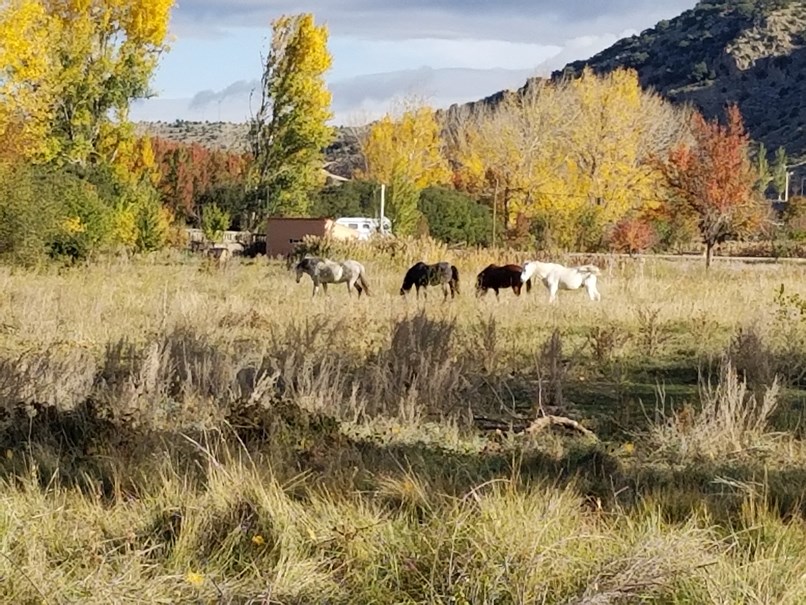
Sections of the original mill have been excavated and covered with clear glass, which now forms part of the living room floor.
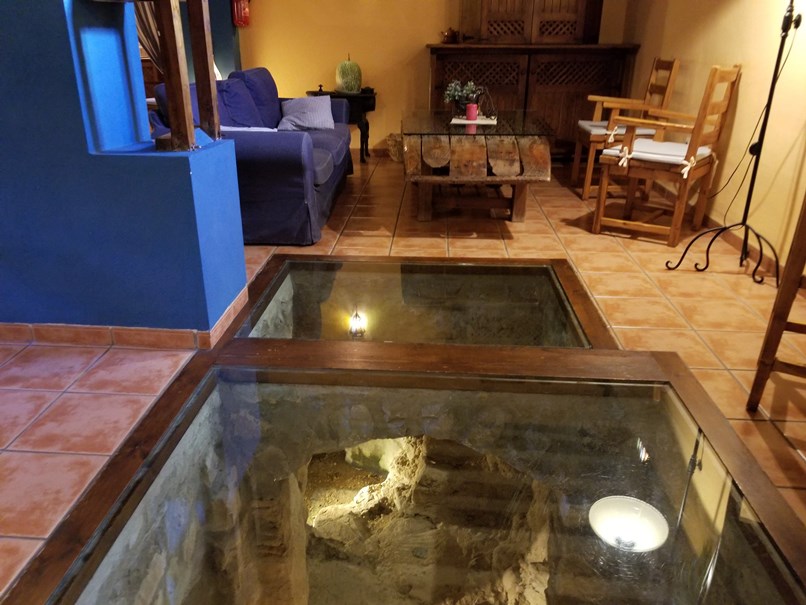
The suites feature wood-beamed ceilings, tiled floors, embroidered pillows, and excellent lighting. We slept with our windows wide open and awoke to the sound of a rooster greeting the dawn, which always brings a smile to my face: it reminds me that I’m in the countryside, far from the noise and traffic of the city.
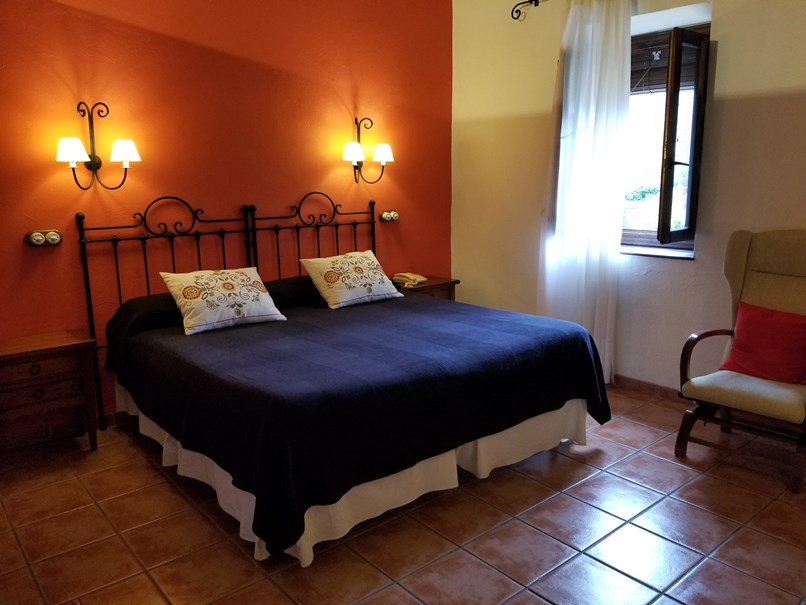
No visit to Albarracín is complete without a visit to its most atmospheric bar and café: El Molina del Gato, which is located around the corner and below the tourist information office. One of the oldest flour mills in Albarracín, it has both an outdoor and indoor area, the original machinery has been kept intact, and the Guadelavier River gurgles beneath it.
NOTE: The Fortress and Cathedral can only be visited on a guided tour. Make reservations in advance for an English speaking tour of the Fortress and the Catedral del Salvador with the Santa Maria Foundation Tel #: 978 704035. You can also ask for assistance in booking these tours at the tourist information center across from the parking lot. Their local guides are terrific.
